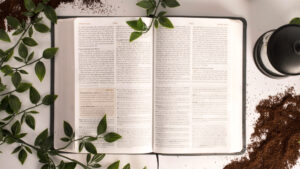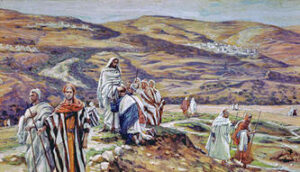
The Shape of the Liturgy
In our house, we have a bedtime liturgy. Our kids, aged 6 and 2, have a bath, put on their jammies, brush their teeth, listen to a story, say a prayer, and go to bed—in that order. On nights when that liturgy is disrupted for one reason or another, we have a tougher time getting our kids to go to bed and stay in bed. Why?
As Fr. Chase wrote last week, “Liturgy can be likened to habits. Habits shape and form us. They also reveal what we truly love and what end we are working towards.” We love well-rested kids and a quiet hour at the end of the day. So, we’ve implemented a liturgy to help accomplish those goals.
Because liturgies “have the power to reorient, redirect, and reshape our hearts and lives,” they are a crucial, indispensable part of our worship. If you walked into any church in the Valley on a given Sunday morning, you’d find that community engaging in a liturgy. Though the content varies significantly, worship rarely unfolds in a freeform, unstructured manner. Descriptions of the earliest liturgies describe a basic shape of liturgical worship: gathering, the Word, the meal, and the dismissal (Justin Martyr’s Apology I, 67). Our Anglican worship directly emulates that ancient pattern, which is condensed into three movements.
The Liturgy of the Word
 The Liturgy of the Word is, simply put, the section of our liturgy in which we root and orient ourselves around the Word of God. During the Liturgy of the Word, you hear, in the words of Thomas Cranmer, “the Word rightly preached.” The following sections of our liturgy comprise the Liturgy of the Word. If you don’t recognize some of these titles, don’t worry—we will explore them in greater detail in the coming weeks!)
The Liturgy of the Word is, simply put, the section of our liturgy in which we root and orient ourselves around the Word of God. During the Liturgy of the Word, you hear, in the words of Thomas Cranmer, “the Word rightly preached.” The following sections of our liturgy comprise the Liturgy of the Word. If you don’t recognize some of these titles, don’t worry—we will explore them in greater detail in the coming weeks!)
- *Opening Acclamation
- *Collect for Purity
- *The Summary of the Law
- *The Kyrie
- *The Gloria
- *The Collect of the Day
- *The Lessons (Old Testament, Psalm, New Testament, and Gospel)
- *The Homily
- *The Creed
- *The Prayers of the People
- *The Confession
- *The Absolution
- *The Comfortable Words
- *The Peace
The Liturgy of the Sacrament
 After the Peace, the tone and tenor of the service shifts. An offertory hymn is sung, and the table is set for Holy Eucharist. The following sections usher us into Christ’s presence as we partake in the Eucharistic feast.
After the Peace, the tone and tenor of the service shifts. An offertory hymn is sung, and the table is set for Holy Eucharist. The following sections usher us into Christ’s presence as we partake in the Eucharistic feast.
- *Sursum Corda
- *Sanctus et Benedictus (usually sung)
- *The Prayer of Consecration
- *The Memorial Acclamation
- *The Epiclesis and Great Amen
- *The Lord’s Prayer
- *The Fraction
- *Prayer of Humble Access
- *Agnus Dei
- *Communion
The Liturgy of the Work
 An oft-unnoticed portion of our liturgy is the conclusion of our worship service. Once we have heard God’s Word rightly preached and partaken in the holy mysteries of the Body and Blood of Jesus, we are, in the words of our Post-Communion Prayer, “sent out to do the work [God] has given us to do” with a blessing from the priest and a dismissal from the deacon. The entire liturgy prepares us inwardly to carry out the mission of God outwardly—in the communities and spaces where we live and work. The Liturgy of the Work includes:
An oft-unnoticed portion of our liturgy is the conclusion of our worship service. Once we have heard God’s Word rightly preached and partaken in the holy mysteries of the Body and Blood of Jesus, we are, in the words of our Post-Communion Prayer, “sent out to do the work [God] has given us to do” with a blessing from the priest and a dismissal from the deacon. The entire liturgy prepares us inwardly to carry out the mission of God outwardly—in the communities and spaces where we live and work. The Liturgy of the Work includes:
- *The Post Communion Prayer
- *The Blessing
- *The Dismissal
The three movements of our Anglican liturgy reveal what we love: to be rooted in God’s Word, fed by His Body and Blood, and equipped to carry out His mission. The shape of the liturgy awakens us to what God is doing in our midst each Sunday morning at Christ Church Anglican.
Soli Deo Gloria,
Dcn. Bree Snow

